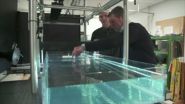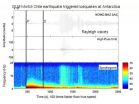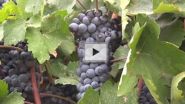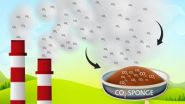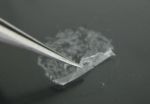(Press-News.org) UCL scientists have discovered a new method to efficiently generate and control currents based on the magnetic nature of electrons in semi-conducting materials, offering a radical way to develop a new generation of electronic devices.
One promising approach to developing new technologies is to exploit the electron's tiny magnetic moment, or 'spin'. Electrons have two properties – charge and spin – and although current technologies use charge, it is thought that spin-based technologies have the potential to outperform the 'charge'-based technology of semiconductors for the storage and process of information.
In order to utilise electron spins for electronics, or 'spintronics', the method of electrically generating and detecting spins needs to be efficient so the devices can process the spin information with low-power consumption. One way to achieve this is by the spin-Hall effect, which is being researched by scientists who are keen to understand the mechanisms of the effect, but also which materials optimise its efficiency. If research into this effect is successful, it will open the door to new technologies.
The spin-Hall effect helps generate 'spin currents' which enable spin information transfer without the flow of electric charge currents. Unlike other concepts that harness electrons, spin current can transfer information without causing heat from the electric charge, which is a serious problem for current semiconductor devices. Effective use of spins generated by the spin-Hall effect can also revolutionise spin-based memory applications.
The study published in Nature Materials shows how applying an electric field in a common semiconductor material can dramatically increase the efficiency of the spin-Hall effect which is key for generating and detecting spin from an electrical input.
The scientists reported a 40-times-larger effect than previously achieved in semiconductor materials, with the largest value measured comparable to a record high value of the spin-Hall effect observed in heavy metals such as Platinum. This demonstrates that future spintronics might not need to rely on expensive, rare, heavy metals for efficiency, but relatively cheap materials can be used to process spin information with low-power consumption.
As there are limited amounts of natural resources in the earth and prices of materials are progressively going up, scientists are looking for more accessible materials with which to develop future sustainable technologies, potentially based on electron spin rather than charge. Added to this, the miniaturisation approach of current semiconductor technology will see a point when the trend, predicted by Moore's law, will come to an end because transistors are as small as atoms and cannot be shrunk any further. To address this, fundamentally new concepts for electronics will be needed to produce commercially viable alternatives which meet demands for ever-growing computing power.
Co-author of the study, Dr Hidekazu Kurebayashi (UCL London Centre for Nanotechnology), said, "We borrowed 50-year-old semiconductor phenomena for our modern spintronic research. Our results are the start of the story but are a proof of principle with a promising future for spins; as we know that there is existing matured semiconductor growth technology, we can stand on the shoulders of the giants."
INFORMATION:
An international research team of scientists from University College London (UCL) and University of Cambridge in the UK, Mainz University in Germany, the Institute of Physic of the Academy of Sciences in Czech Republic, and Tohoku University in Japan worked on the study.
Pairing old technologies with new for next generation electronic devices
2014-08-10
ELSE PRESS RELEASES FROM THIS DATE:
Physicists create water tractor beam
2014-08-10
VIDEO:
Physicists at the Australian National University have created a tractor beam in water. Using a simple wave generator they can create water currents which could be used to confine oil...
Click here for more information.
Physicists at The Australian National University (ANU) have created a tractor beam on water, providing a radical new technique that could confine oil spills, manipulate floating objects or explain rips at the beach.
The group, led by Professor Michael ...
2010 Chilean earthquake causes icequakes in Antarctica
2014-08-10
VIDEO:
High-frequency icequakes are shown at station HOWD in Antarctica during the distant waves of the 2010 magnitude 8.8 Chile earthquake. The triggered icequakes are indicated by the narrow vertical bands...
Click here for more information.
Seismic events aren't rare occurrences on Antarctica, where sections of the frozen desert can experience hundreds of micro-earthquakes an hour due to ice deformation. Some scientists call them icequakes. But in March of 2010, the ice sheets ...
Target identified for rare inherited neurological disease in men
2014-08-10
Researchers at University of California, San Diego School of Medicine have identified the mechanism by which a rare, inherited neurodegenerative disease causes often crippling muscle weakness in men, in addition to reduced fertility.
The study, published August 10 in the journal Nature Neuroscience, shows that a gene mutation long recognized as a key to the development of Kennedy's disease impairs the body's ability to degrade, remove and recycle clumps of "trash" proteins that may otherwise build up on neurons, progressively impairing their ability to control muscle ...
The grass really is greener on TV and computer screens, thanks to quantum dots
2014-08-10
SAN FRANCISCO, Aug. 10, 2014 — High-tech specks called quantum dots could bring brighter, more vibrant color to mass market TVs, tablets, phones and other displays. Today, a scientist will describe a new technology called 3M quantum dot enhancement film (QDEF) that efficiently makes liquid crystal display (LCD) screens more richly colored.
His talk will be one of nearly 12,000 presentations at the 248th National Meeting & Exposition of the American Chemical Society (ACS), the world's largest scientific society, taking place here through Thursday.
"Green grass just pops ...
Pregnant women and fetuses exposed to antibacterial compounds face potential health risks
2014-08-10
SAN FRANCISCO, Aug. 10, 2014 — As the Food and Drug Administration (FDA) mulls over whether to rein in the use of common antibacterial compounds that are causing growing concern among environmental health experts, scientists are reporting today that many pregnant women and their fetuses are being exposed to these substances. They will present their work at the 248th National Meeting & Exposition of the American Chemical Society (ACS), the world's largest scientific society.
The meeting, which takes place here through Thursday, features nearly 12,000 presentations on a ...
Wine symposium explores everything you wanted to know about the mighty grape (video)
2014-08-10
San Francisco, Aug. 10, 2014 — Location. Location. Location. The popular real estate mantra also
turns out to be equally important for growing wine grapes in fields and storing bottles of the beverage at home or in restaurants, according to researchers.
Those are just two of the topics that will be covered in a symposium titled, "Advances in Wine Research," that will run today through Tuesday at the 248th National Meeting & Exposition of the American Chemical Society (ACS). The meeting features nearly 12,000 reports. A brand-new ACS video on the topics is available ...
Carbon dioxide 'sponge' could ease transition to cleaner energy
2014-08-10
SAN FRANCISCO, Aug. 10, 2014 — A sponge-like plastic that sops up the greenhouse gas carbon dioxide (CO2) might ease our transition away from polluting fossil fuels and toward new energy sources, such as hydrogen. The material — a relative of the plastics used in food containers — could play a role in President Obama's plan to cut CO2 emissions 30 percent by 2030, and could also be integrated into power plant smokestacks in the future.
The report on the material is one of nearly 12,000 presentations at the 248th National Meeting & Exposition of the American Chemical Society ...
On the frontiers of cyborg science
2014-08-10
SAN FRANCISCO, Aug. 10, 2014 — No longer just fantastical fodder for sci-fi buffs, cyborg technology is bringing us tangible progress toward real-life electronic skin, prosthetics and ultraflexible circuits. Now taking this human-machine concept to an unprecedented level, pioneering scientists are working on the seamless marriage between electronics and brain signaling with the potential to transform our understanding of how the brain works — and how to treat its most devastating diseases.
Their presentation is taking place at the 248th National Meeting & Exposition of ...
Like cling wrap, new biomaterial can coat tricky burn wounds and block out infection
2014-08-10
SAN FRANCISCO, Aug. 10, 2014 — Wrapping wound dressings around fingers and toes can be tricky, but for burn victims, guarding them against infection is critical. Today, scientists are reporting the development of novel, ultrathin coatings called nanosheets that can cling to the body's most difficult-to-protect contours and keep bacteria at bay.
The researchers are speaking about their materials, which they've tested on mice, at the 248th National Meeting & Exposition of the American Chemical Society (ACS), the world's largest scientific society.
The meeting features ...
Women who 'lean in' often soon leave engineering careers, study finds
2014-08-09
WASHINGTON –- Nearly 40 percent of women who earn engineering degrees quit the profession or never enter the field, and for those who leave, poor workplace climates and mistreatment by managers and co-workers are common reasons, according to research presented at the American Psychological Association's 122nd Annual Convention.
While women accounted for more than 20 percent of engineering school graduates over the past two decades, only 11 percent of practicing engineers are women, and only 9 percent of electronic and environmental engineers are, said Nadya Fouad, PhD, ...
